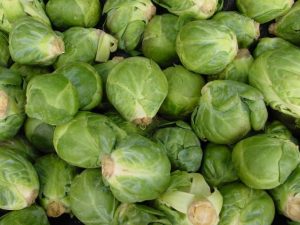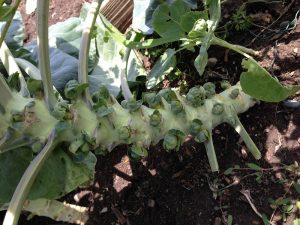Brussels sprouts have long been under-appreciated by many, but now they proudly join other conveniently packaged vegetables in produce aisles and at farmers markets. They’re loaded with good nutrition – a one-half cup serving has just 28 calories, 0 fat grams and 81 percent of your daily vitamin C requirement. Brussels sprouts are also a good source of dietary fiber, vitamins A and K, folate, potassium, iron, manganese and many other nutrients.
Brussels sprouts are also pretty easy to grow in the home garden. This cool-season crop can be started from transplants in early spring, but requires a long growing season, about 90 days to first harvest. By then, the heat of summer will make the sprouts bitter and loose-leaved. Indiana gardeners get the best results when planting in mid to late summer for a fall harvest.
The sprouts, which resemble tiny heads of cabbage, are the lateral foliage buds that develop along the stem, just above where the leaves are attached. They begin to form at the bottom of the stem and continue to progress up to the top throughout the growing season.
Produce stores typically only carry the green types, but home gardeners can choose from an impressive list of cultivars from garden seed suppliers – some mature about two weeks earlier and a few, such as Rubine and Falstaff, can be found with reddish-purple sprouts.
Brussels sprouts should be cut, snapped or twisted to remove from the stem when they reach about 1-1.5 inches in diameter. Some gardeners prefer to remove the lower leaves as the sprouts form, allowing more room for them to grow and to facilitate harvest. Some gardeners also remove the top growing point of the stem just prior to the beginning of harvest to speed the development of the side buds.
The plants can remain in the garden until after a hard freeze. They tolerate frost well, and flavor improves in cold weather.
Read more about the nutritional value of Brussels sprouts at http://nutritiondata.self.com/facts/vegetables-and-vegetable-products/2363/2

